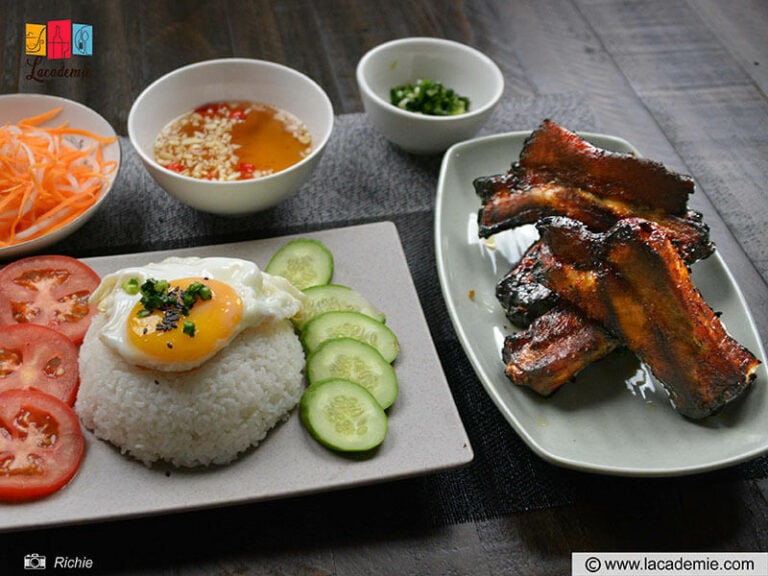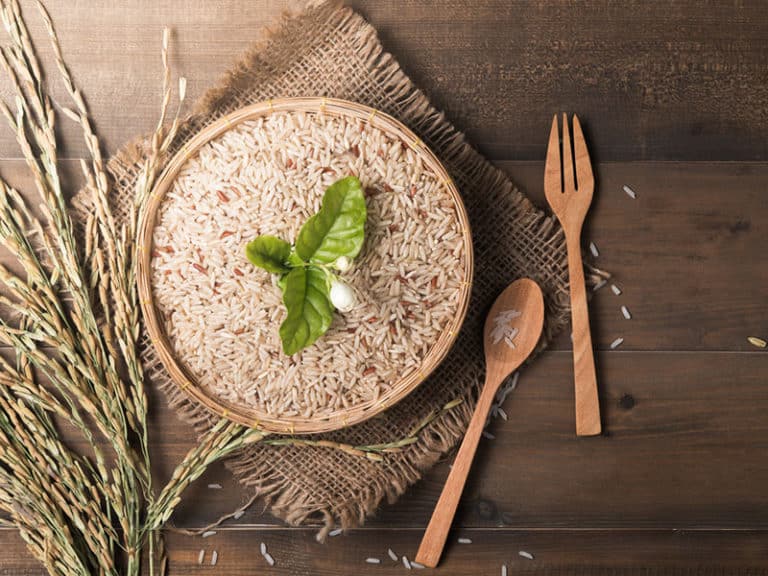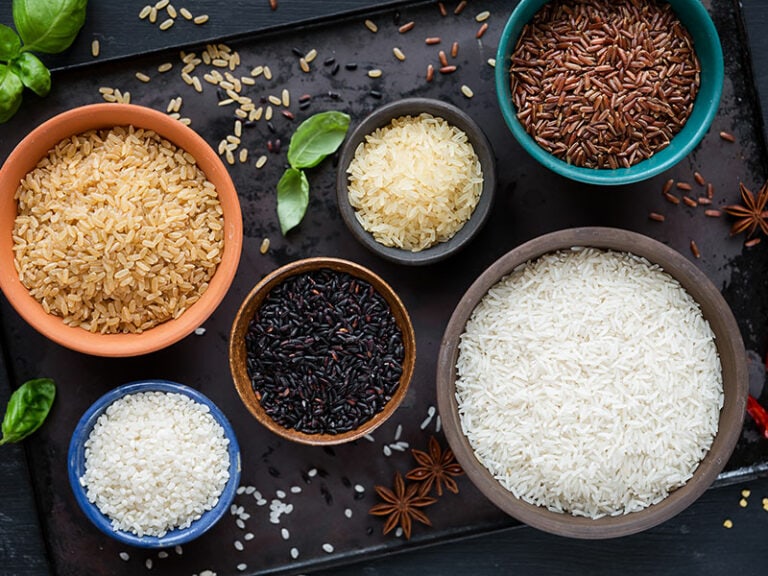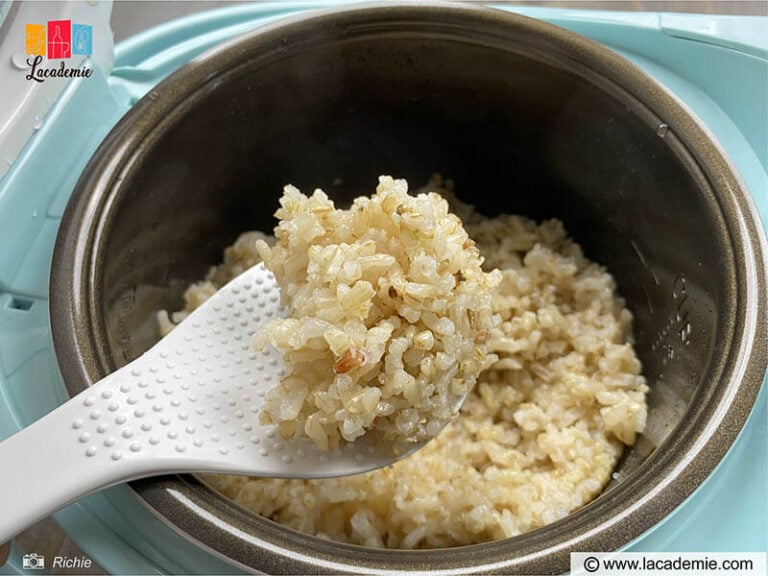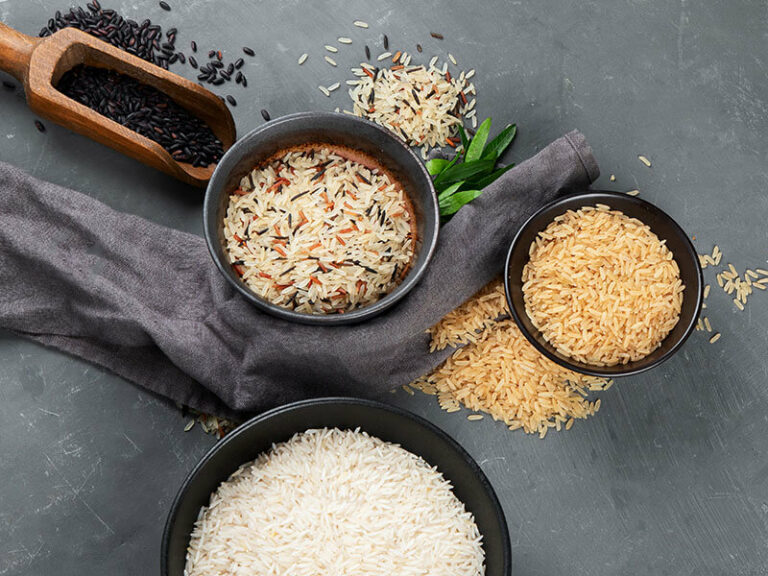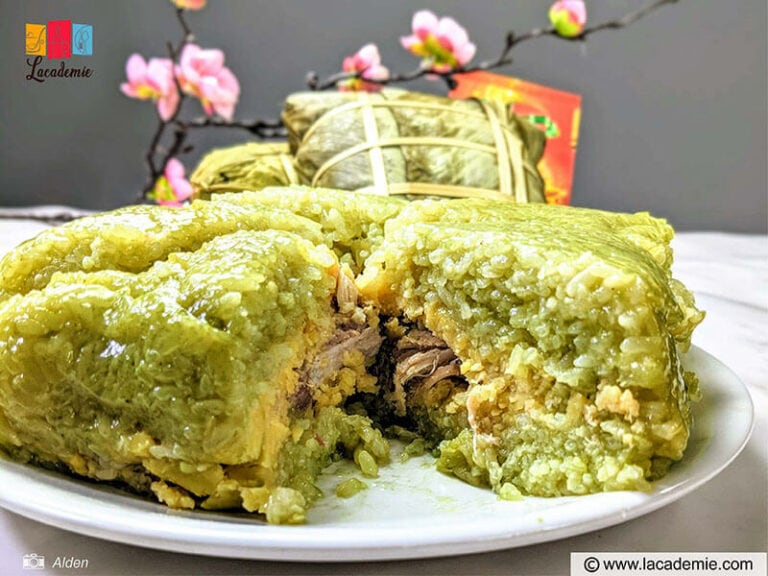You and your friends are quarreling over a question: is rice a vegetable? Your friend says yes because rice is an edible part of a plant. You say no since you think vegetables are just a part of a meal while rice is a staple food.
Both of you and your friends are right in a different way. But please, allow me to dig deeper into the world of vegetables and rice. I will demonstrate what you want to know about vegetables. Therefore, you can answer whether rice is a vegetable or not.
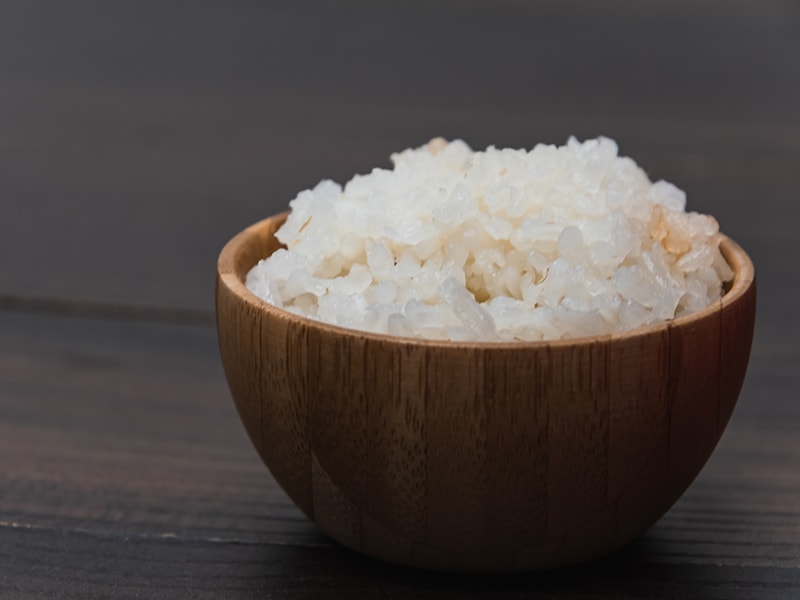
What Are Vegetables?
I think everybody will have some hem and haw moment whenever someone asks them to define vegetables. This section will give you a brief talk about vegetables. So don’t be too worried. You are going to be equipped with wisdom soon.
“Vegetables”, or “veggies”, is a term that refers to parts of herbaceous plants. These parts are edible and can be eaten fresh or served in numerous ways. They can be roots, leaves, stems, flowers, fruits, or seeds.(1)
You can classify vegetables in many ways. But in this post, I will introduce the four most common and well-known groups of vegetables.
Root Vegetables
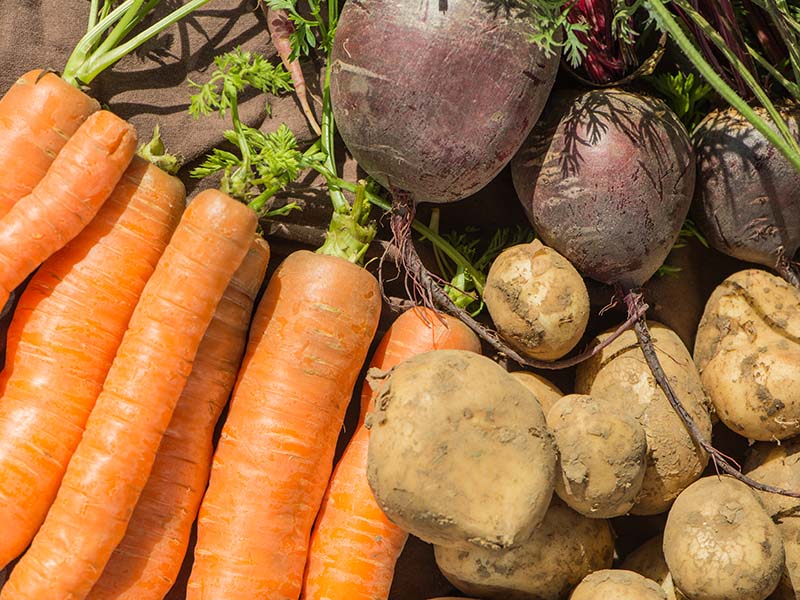
You can list carrot, beetroot, ginger, potato, etc. People see them as the most nutritious food in autumn.
Instead of preserving their nutrients in fruits or leaves, they store them in their roots, and the results are their buffed roots.
Root vegetables are usually starchy. They are also good providers of carotenoids which is the red pigment in nature. Carotenoids help prevent cancers and protect your eyes.
You can learn how to grow root vegetables and enjoy their carotenoids.
Cruciferous Vegetables
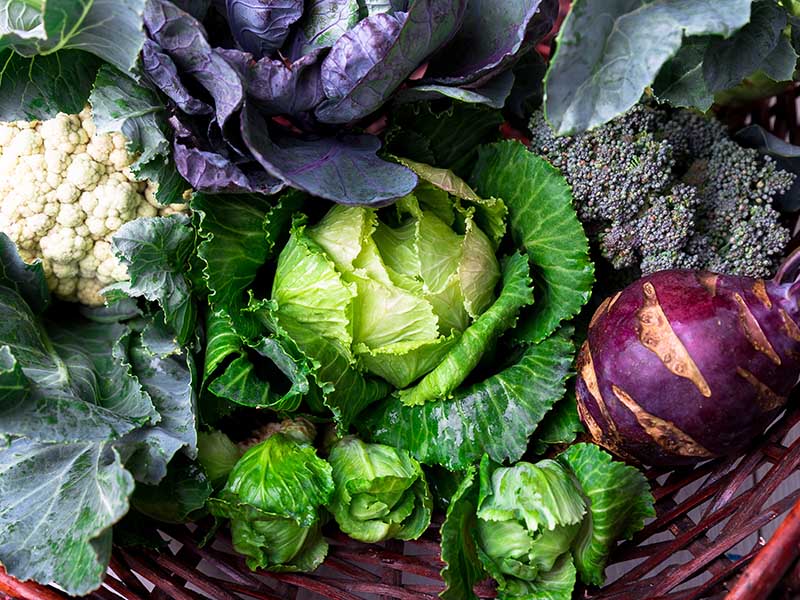
This group includes vegetables from the Brassicaceae family. Other names of this family are the mustard, the crucifers, and the cabbage family.
Vegetables from this cruciferous group are cabbage, bok choy, broccoli, etc. Some can be ornamental decorations like Alyssum, Lunaria, Matthiola, etc. Although most cruciferous species are beneficial, some species are too invasive, like garlic mustard.
Cruciferous vegetables supply you with a good amount of vitamins and fiber. Fiber maintains your fuller, so you will feel less urge to ingest more food. Therefore, eating vegetables from this group can help you to lose weight.
Leafy Vegetables
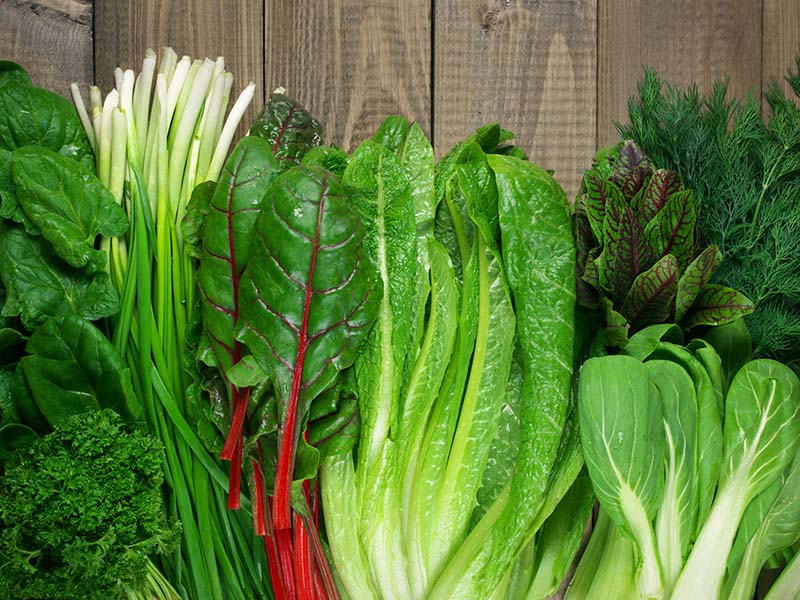
Leafy vegetables, or green vegetables, is the term to indicate a group of edible leaves vegetables. With this group, you can also eat their stems, their stalks, and their shoots.
Presentative species of this group can be named lettuce, spinach, mint, dandelion, etc. This group is rich in vitamins and minerals but low in calories.
Having a diet with this group of vegetables can improve your blood pressure, reduce the risk of getting heart disease, and enhance your mental health.
Nightshade Vegetables
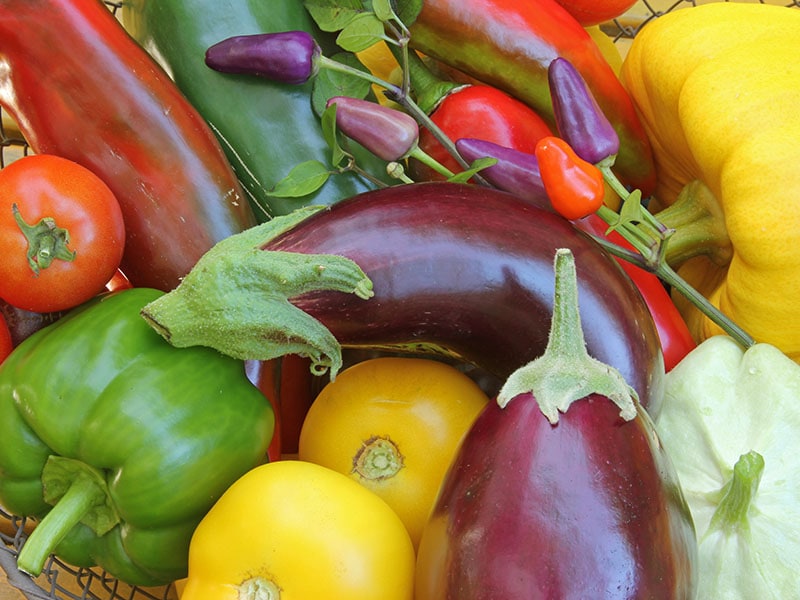
Nightshade, or Solanaceae, is a group of plants that play an important role in the economy of food. Some nightshade vegetables are actually fruits, but they are still considered vegetables due to their usage.
Perfect examples of this group are potatoes, tomatoes, tobacco, pepper, etc. They are colorful and very nutritious. You can go to the supermarket and see this group of vegetables exist on every aisle in different forms.
There are some rumors about nightshade vegetables contributing to bowel disease and autoimmune disease. But so far, there has been no scientific evidence to defend that statement.
The nutritionist will give you more details about nightshade vegetables and its alkaloid.
Is Rice A Vegetable?
After learning about the “terms and conditions” of being a vegetable, it’s time to decide if rice can be a vegetable or not.
Rice Is A Form Of Grain
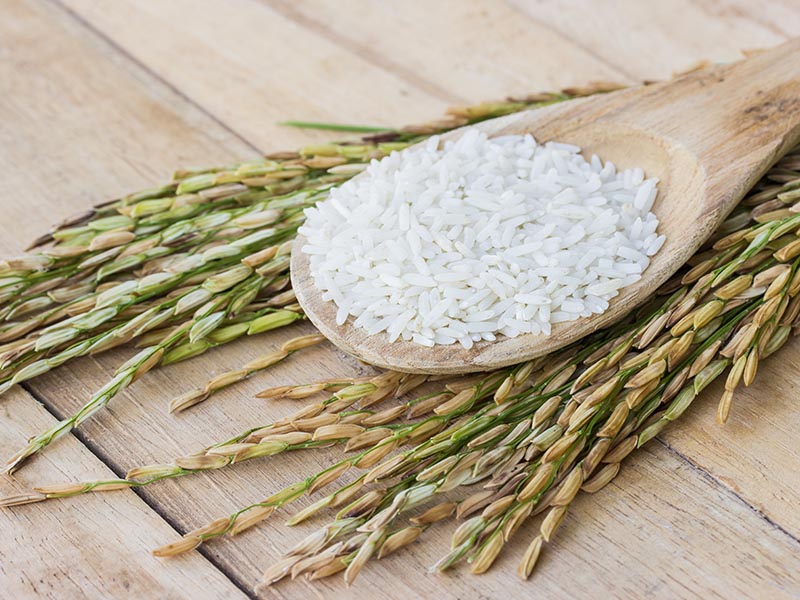
Rice is the seeds of plants. It is a staple food that people have daily with a dominant portion compared to the whole meal. That’s what makes rice different from other types of food.
Rice belongs to the cereal grain category. 50% of the human population consumes rice every day. Rice is also the main ingredient for making noodles, alcohol, and other products.
Rice Is A Vegetable, Isn’t It?
If you use the above definition of vegetable to identify rice, it may be a vegetable. But in the interpretation, people also note that vegetables play as a complement to meat, or other ingredients, as a side dish. And humans do not regularly eat rice as a side dish.
However, there’s another definition of vegetable. In that statement, people say if a plant has an edible part, that is a vegetable. Following this description, rice is a vegetable.
On the other hand, if you think that vegetables are herbaceous parts of plants that you eat as a side dish, then rice is not a vegetable. Additionally, rice doesn’t belong to any of the four groups of vegetables.
To decide whether rice is a vegetable or not, you need to know which definition you feel is more precise and reasonable. But so far, most people concur with the idea that rice is not a vegetable.
“So is rice suitable for a vegan diet?” – you might ask. The good news is, vegetable or not, rice is always a good choice for veganism.
Benefits Of Eating Rice You Should Know About
You probably have eaten rice before, but do you know what you digest? To provide you with knowledge of rice, I will talk about what you can gain from eating rice.
Good Food For Weight Loss
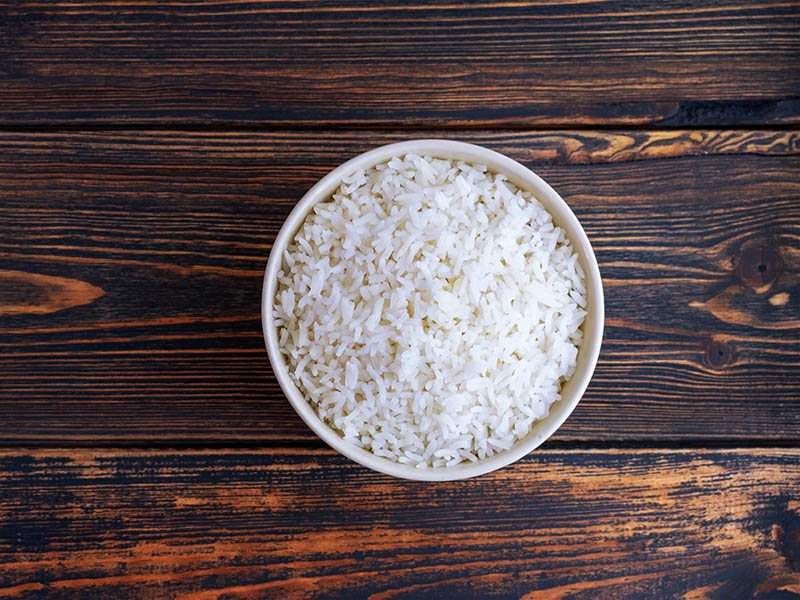
80% of the total weight of rice is carbohydrates. The intrinsic nature of these carbohydrates is amylose and amylopectin.(2)
Carbohydrates are sugars, and the body needs sugars to burn. Rice is rich in them, so it can provide you with a lot of energy. More interestingly, if you learn how to eat rice moderately, you can lose weight with rice.
To do so, you will need to find a source of complex carbohydrates since it will take your body more time to digest the food completely. In rice, amylose is a complicated sugar, so you will want to choose the rice type with high amylose to achieve weight loss.
On the other hand, amylopectin is so much easier to absorb. Therefore, you will feel your hunger sooner when you eat rice with more amylopectin.
Amylopectin is like glue substances in your rice. When your cooked rice is separate, it means your rice has less amylopectin than amylose. Your body will take more time to break down this rice, and you will feel less hungry.
Long-grain rice types are very fluffy when they are cooked. On the contrary, short-grain rice types are keen on sticking together when cooked. Therefore, you can conclude that long-grain rice has more amylose and is better for your weight loss.
Rice with a gooey and sticky texture like glutinous rice has less amylose and will be digested faster. Therefore, your body will get hungry more often.
Boost Your Immunity And Improve Your Brain
Rice is rich in vitamin B and folate. They are beneficial for your neurotransmission. Eating rice will enhance your nerves and help regulate your body systems.
In addition, carbohydrates in rice contribute energy to the brain. Therefore, your brain is guaranteed to work more smoothly if you consume rice regularly.
Rice Water Is So Good For Your Skin And Hair
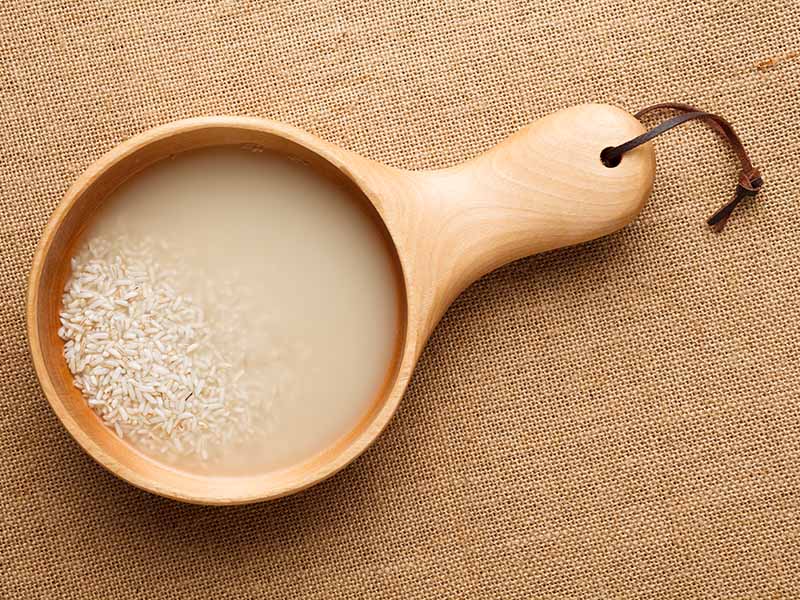
When you wash and rinse rice, you will produce a pot of rice water. Do you know that this liquid is like an elixir for hair and skin? Inositol in rice water can nurture your hair and provoke your hair to grow. It also decelerates hair loss and strengthens your hair.(3)
Rice water is also full of minerals and antioxidants that extend your skin’s youth. Rice water can also maintain your skin’s elasticity. Not only that, but rice can also boost your skin tone and reduce the oily condition of your face.
Allow me to introduce you to the right way to make rice water that you can use for your hair.
Rice Is Gluten-Free
All types of rice are gluten-free. Gluten is a special protein that can be found in rye, wheat, oats, barley, and other cereal grains but not in rice.
These days, so many people find themselves having gluten sensitivity or Celiac disease. Celiac disease is an autoimmune disease that can disturb your intestine whenever you consume gluten. Therefore, gluten-free food is vital, especially for Celiac patients.
The fact that rice is gluten-free releases people’s consideration over their nutrient intake. Rice is the main ingredient in many foods without gluten. In fact, gluten-free bread is made of rice flour.
Common Types Of Rice
You can classify rice with many methods, but the most common way to do this is due to its grain size. Therefore, you can have three groups of rice: short-grain, medium-grain, and long-grain.
Short-Grain Rice
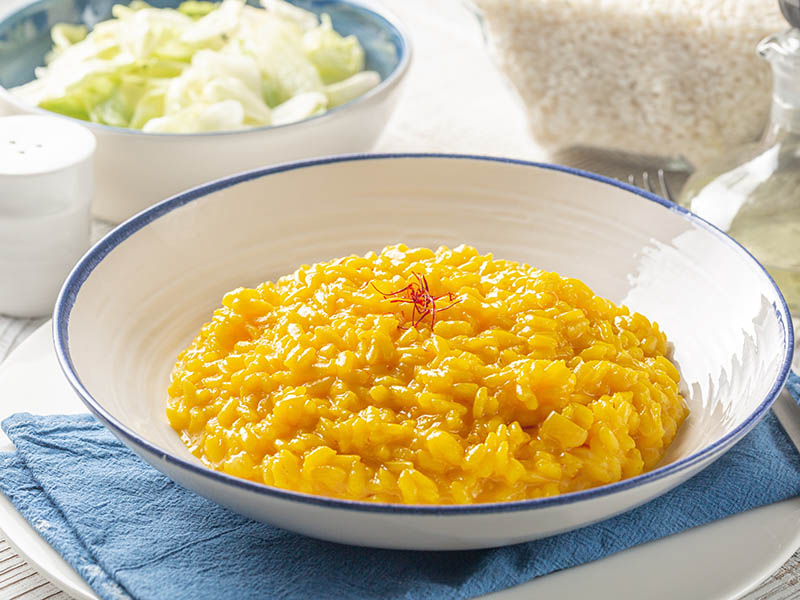
Short-grain has its length less than twice its width. This group of rice usually has an oblong shape. They usually have a high amount of amylopectin. Therefore, this rice contains a lot of carbs. It is creamy and sticky when cooked.
Short-grain rice can be found anywhere in the world. Sushi rice from Japan, Arborio from Spain, Carnaroli from Italy, or sticky rice (glutinous rice) from Southeast Asia are all short-grain. And those are just popular names that you may see in the supermarket.
Short-grain rice usually appears in creamy or sticky dishes. Risotto is a famous dish from Italy, and you need Arborio or Carnaroli to make this dish. To make sushi, of course, you will need Sushi rice. To make Chinese congee, you will need sticky rice.
Medium-Grain Rice
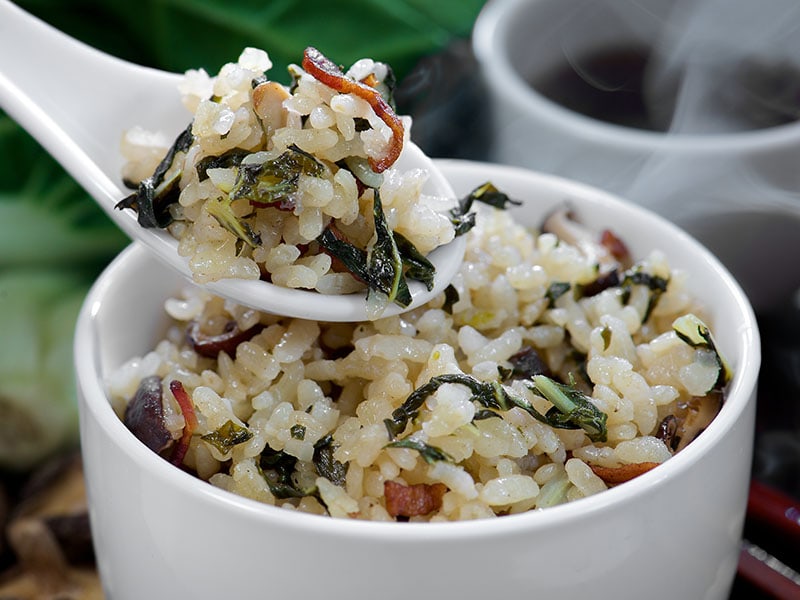
Medium-grain is not as starchy as short-grain. Their length must be two or three times longer than the width.
In this category, you can see two famous names, which are Jasmine rice and Japonica rice. Both of them are from Asia. Medium-grain rice is the typical white rice that most people in the world have nowadays.
You can see people use medium-grain rice for both creamy dishes and dry dishes. Medium-grain can be used to make risotto or parmesan rice. It can also be part of fried rice dishes. But when it comes to bland white rice, medium-grain is still the best option.
Long-Grain Rice
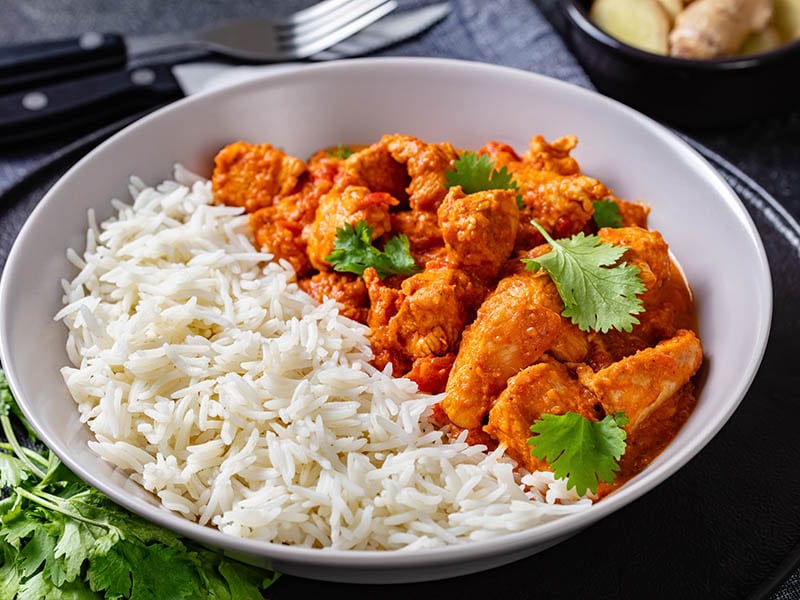
Long-grain has its grain at least three times as long as its width. This group of rice has the least amylopectin. Therefore, when it is cooked, all the grains are separated. This rice is the most common in the USA.
This group of rice can participate in dishes like curry rice or fried rice. Burrito is also one of the typical dishes for long-grain rice. But since this rice is not really sticky, it is kind of a waste to use it for mushy dishes like rice pudding or rice soup.
Long-grain rice can be grown globally. The three most famous American rice, which are Carolina rice, Texmati Rice, and Kasmati, are all long-grain rice. This rice is people’s favorite since it has a fair amount of carbs, and it is recommended for athletics or gymers.
The world’s most popular long-grain rice is basmati but not everybody knows how to cook it correctly.
How To Preserve Rice
Do you know that rice can reach 30 years of shelf life? But to get to that number, you need to prepare some work in advance. This section will give you instructions on how to store your rice.
Uncooked Rice
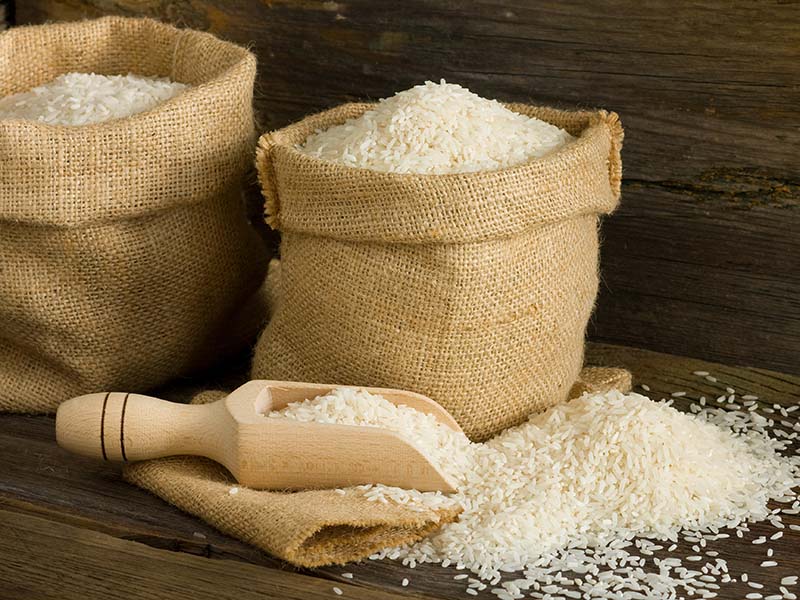
When you buy uncooked rice, you might buy a large amount. Because your home is a big family and you guys eat rice daily. But you can buy one small package of rice and plan to eat it sporadically.
Each scenario will have a different method for rice preservation. With a small portion of rice, you can store them in the refrigerator, and I highly recommend this solution.
For people who are wondering if uncooked rice should go into the freezer, the answer is yes. However, you’ll need the right technique to freeze them effectively. With a heavy sack of rice, you might need a freezer just for rice or have to learn how to store them at room temperature.
Well, I have all the information for you here.
In The Refrigerator Or The Freezer (18 Months)
Having your rice stored at a low temperature and in a vacuum is the ultimate solution for long-term rice storage. This way, your rice can maximize its shelf life. But before throwing your whole sack of rice carelessly, you need to do some preparation steps first.
Step 1: Check Your Rice
Make sure that your rice doesn’t have any sign of wetness in there. Mold can still grow at very low temperatures, and water with food in a tight environment is its ideal living space.
When you decide to put your rice in the refrigerator or a freezer, you do not have to worry too much about weevils. They will die after 3-4 days at low temperatures.
Step 2: Divide Them If You Can
Many put all of their uncooked rice in one big container or just pour them inside the crisper of the refrigerator and forget about it. This is fine to do but if you put your rice in an airtight bag, it will promise your rice a dry and secure environment to be preserved.
Portioning your uncooked rice into suitable rice serving sizes helps you manage your rice better in the refrigerator. You can control which bag you should eat first and which later. And in case one of your bags is infested with mold, you will only lose that unlucky bag.
Step 3: Label Your Bags
You will reach the master level of food storing if you start a habit of labeling your food. You can write down the date of storage and how much rice you put in the bag. Therefore, you can control what is inside your storage and manage your family’s meals reasonably.
At Room Temperature (6-12 Months)
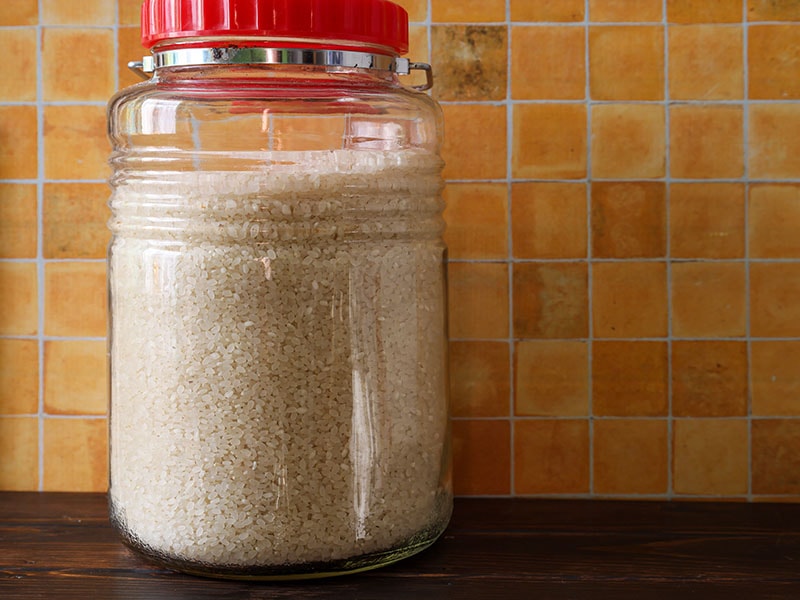
It is understandable if your house doesn’t own a freezer or your refrigerator doesn’t have that kind of space for rice. You can store your rice outside as well. And to ensure a good healthy shelf life for your rice, you can follow these steps.
Step 1: Carefully With The Rice Input
You need to check the quality of your rice before bringing it home. Any sign of weevil infestation means no to your pantry or your kitchen. Weevil is a pesky parasite that can cause a pandemic to all of your kitchen’s spices and grains.
You also want to look for dampness in your rice. If your rice has some signs of water, you need to dry them immediately before mold and B.cereus feel comfy with your rice.
To prevent this, you can spend a day sun-drying that whole sack of rice before storing it. If you have an oven at your home, you can dry your rice in that oven to save time.
Your container has some standards to adapt to as well. You will want your container to be dry. There is no hole on its surface, and it is best if you have a waterproof container. You use a plastic drum or wooden barrel for this purpose.
One last thing that you want to ensure is where you will put that barrel of rice. You will want to choose somewhere dry where water leakage is impossible to happen. People’s favorite spot for rice is usually under the counters.
Step 2: Put Your Rice In
You can either pour rice inside the barrel or cut the head of the sack and keep a whole sack of rice in your barrel. After your barrel is sitting neatly under the counter, it is time to close the lid.
If your lid is heavy, it will be the ideal barrel for your rice. With a light cover like those lids from plastic drums, you can use something dense to pressure that lid. This will give your rice a prominent life with no rats or cockroaches.
Step 3: Ensure A Good Shelf Life For Your Rice
After closing that lid, you still need to remember that casual temperature is not the best condition to store your rice. Therefore, you need to examine your barrel of rice periodically.
You will want to look for signs of weevils (black insects or grumbling rice), molds, or any weird smell. Any of those signs means you need to bring that barrel out for further investigation, and in the worst scenario, you need to get rid of that rice.
You can learn how to store rice long-term for a future apocalypse.
Cooked Rice
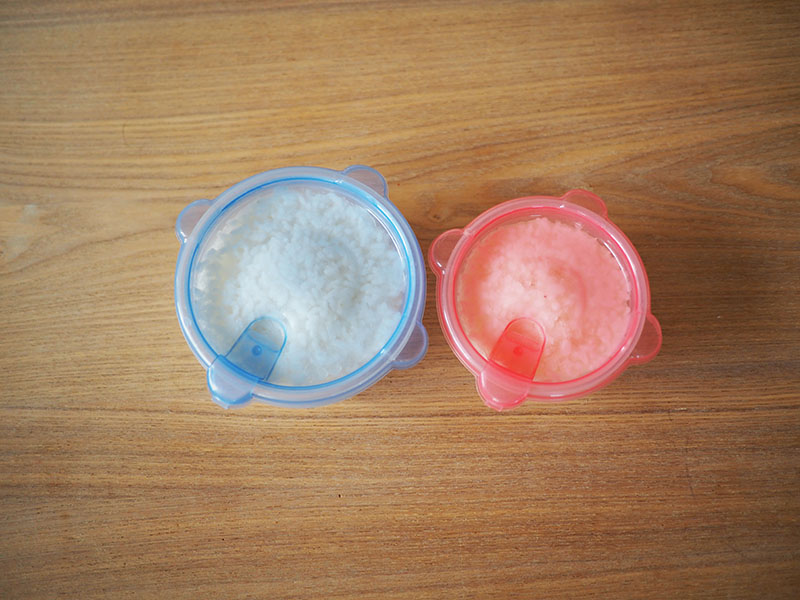
Cooked rice always has a high potential of being infected with Bacillus cereus, especially if you decide to leave rice out overnight. Therefore, I highly suggest preserving it in the refrigerator or the freezer.
Cooked rice in the refrigerator can last for 4-6 days, and with the freezer, edibility can be extended to six months. “Is eating cold rice safe?” – you might ask. Well, after thawing your rice, you can either reheat it or enjoy it cold. But to maximize your rice age, you need to follow the steps to prominent your process.
Here is an instruction on how to properly store cooked rice in the refrigerator or the freezer.
Step 1: Allow Your Rice To Rest
Your rice needs to be at a cool temperature because hot rice contains high moisture. You want your rice to be dry for quality preservation.
To decrease your rice heat, you should spread it on a tray or anything with a large surface. Remember to be gentle with your rice. Rice is very vulnerable. After 15-30 minutes, your rice should be dry.
You can accelerate this step with an oven by putting that tray in the oven at 175 degrees Celsius (350 degrees Fahrenheit) for 5 minutes.
Step 2: Separate Them In Bags
You should divide your rice into portions and put them in different bags. Your bags or containers need to be airtight to prevent your rice from being exposed to air. Vacuuming is necessary if you want to maximize the storage time.
Since your bags or containers are airtight, this shows how important the dryness of rice is. Storing rice at high moisture can provoke mold to grow. Therefore, your rice will be poisonous and need to be tossed away.
Having your rice in different bags is also very convenient and secure. If one of your rice bags is infested, you only lose that bag instead of a whole batch.
Step 3: Put Your Rice In Order
Don’t throw your rice in the refrigerator or the freezer like they are balls of food. You definitely do not want your rice to be sticky and mushy, do you?
Having them lying in order is also advantageous when you want to take them out. You will not have to worry about spillage or messy storage.
To upgrade to another level of food preservation, you should label your rice. You will want to detail how much rice is in that container and when you put it in the refrigerator or the freezer.
Are Riced Vegetables Actually Rice?
When people’s standards about ingestion evolve, they demand more varieties of food to adapt to their nutrition schedule. Riced vegetables are one of those adaptations.
What Are Riced Vegetables?
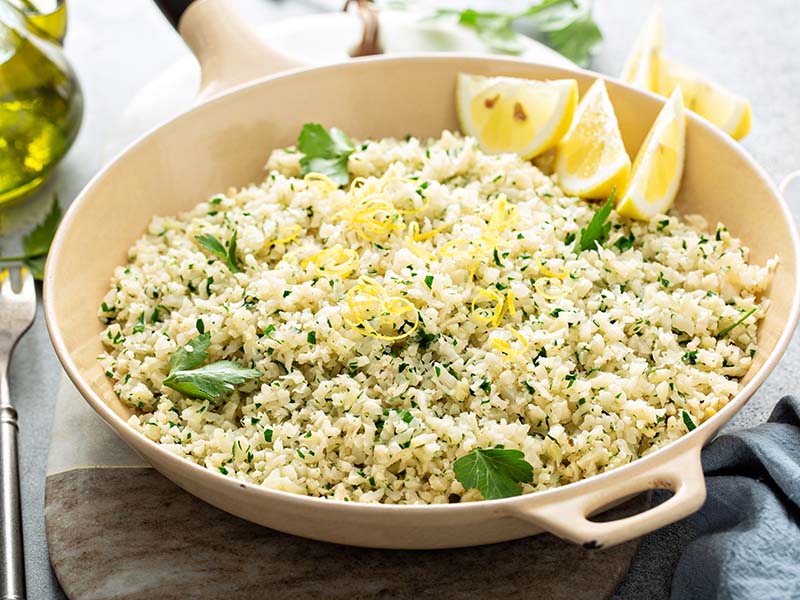
Riced vegetables, or riced veggies, are blended vegetables into rice size. These vegetables can be cauliflowers, broccoli, sweet potatoes, or beets.
Riced vegetables are made to adjust three mains requests: gluten-free, grain-free, and low calories. People who want to lose weight can look for this type of food.
You can learn how to make seven flavors of riced cauliflowers here.
Riced Vegetables Vs. Rice
Believe it or not, riced vegetables can still make many people believe that they are rice. I can confirm that it is an incorrect thought, but let’s go through some comparisons between the two.
To compare these two together, you can consider these criteria:
Appearance
Riced vegetables are chopped vegetables so they can be the size of rice. They are not even distant relatives of rice. They are the disguisers, the pretenders, but for a good purpose.
Riced vegetables tend to be more colorful than rice as well. Rice is famously known for three colors: white, brown, and black. Riced vegetables, on the other hand, can have vivid hues from root vegetables and green or white colors from cruciferous groups.
Nutrition
Riced vegetables have low carb and high fiber. They are a keto-friendly type of “rice”. And riced vegetables are there to adapt to humans’ thirst for weight loss.
Riced vegetables are mostly cruciferous or root vegetables. Therefore, they are rich in antioxidants and minerals.
It is hard to conclude which one is better to consume since they give you different nutrients. You will prefer riced vegetables if you want to reduce sugar intake. But if you are an athlete, riced vegetables can’t give you the energy that you need.
Taste And Texture
Some people say that riced vegetables can mimic rice’s flavor and texture. However, let’s dig this matter a little deeper.
Riced vegetables can deliver some sweetness due to their low amount of starch, but overall, they have a pretty bland taste. Riced vegetables can taste like any condiment that you add for seasoning. While rice tastes sweet because of its natural carbohydrates components.
Regarding texture, rice tends to be fluffy and chewy when it’s cooked. Riced vegetables, on the other hand, cannot adapt to this standard. They are boiled vegetables, so they are either more crunchy or soggy.
Riced Vegetables Are Rice?
Riced vegetables are legit vegetables with the size of rice. Meanwhile, I have confirmed at the beginning of this post that rice is not a vegetable, and many people also prefer this statement.
Riced vegetables are not rice, intrinsically and nutritiously, literally and metaphorically. In the previous section, origins, nutritious information, taste, and texture have been discussed, and you can see the difference between the two foods.
Some Mouthwatering Rice Recipes That You Can Try
At this point, you probably have the urge to rush into the kitchen and make some dinner, right? I can suggest some recipes for you to try.
Parmesan Rice
Nothing can be better than a creamy, buttery Italian bowl of Parmesan rice. Combining creamy cheese and health is not an easy task, but here you go, a perfect recipe for you.
New Orleans Red Beans And Rice
New Orleans cuisine is immersed in Creole color. How’s about making a dish of red beans and rice New Orleans style? I can guarantee a nice lunch for you with this recipe.
Malaysian Rice With Coconut Milk (Nasi Lemak)
Have you ever tried this healthy and delicious Malaysian dish? With good preparation, this meal will satisfy your craving for rice.
If you don’t like coconut milk, you can change back to using regular water. This dish can also go with any rice that you want to use.
Coconut Rice Pudding With Ginger Blueberries
Rice pudding is a simple and perfect dessert for anyone into rice. Rice is not an ingredient for a savory dish. You can also use it for a sweet dessert like rice pudding.
FAQs
That was a long journey about rice and vegetables. You probably have had so many uncertainties and questions along the way. This section is where some of them will be unlocked by more wisdom.
Now You Know That Rice Is Not A Vegetable
Another journey has its start, and this is the end of today’s trip. I hope you have gathered enough information that you were looking for. Rice is not a vegetable, but it still depends on how you believe.
Since this post has given you what you wanted, why not share it with your friends and family? I’m sure they really want to read more valuable information and would love to talk about rice and vegetables with you. Until next time. Stay safe and keep asking questions!
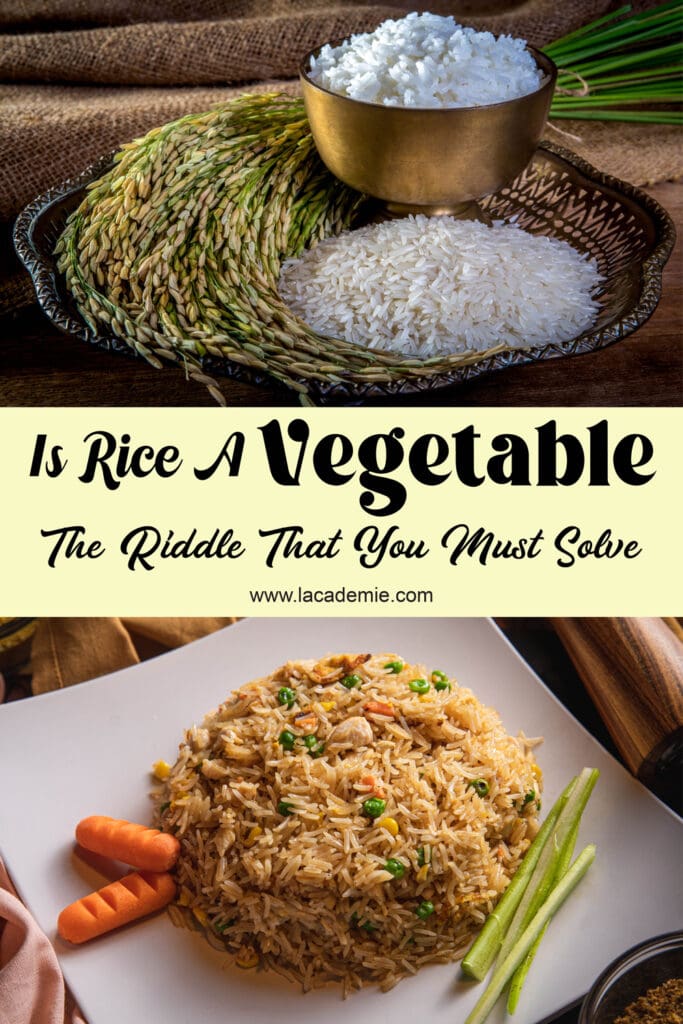
References
- Encyclopedia Britannica. 2022. vegetable | Description, Types, Farming, & Examples.
- Medicalnewstoday.com. 2022. Rice 101: Nutrition facts and health effects.
- Cleveland Clinic. 2022. Rice Water: How It Benefits Your Hair.

